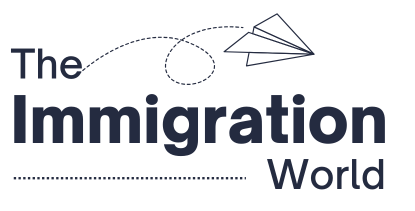The European Union is phasing out traditional Schengen visa stickers and shifting to a fully digital application process by 2028. This major update will let applicants submit forms, upload documents, and track progress entirely online—no more handwritten paperwork or physical labels. First-time applicants will still need to provide biometrics in person, but overall, the system promises faster processing, tighter security, and less hassle for tourists, students, and business travelers alike. A soft rollout begins in 2026, so it’s worth getting familiar with the upcoming changes now.
Key Takeaways
What Is the Digital Schengen Visa and Why Is It Being Introduced?
If the thought of queuing outside an embassy with a folder full of documents gives you flashbacks, good news: the Schengen visa process is finally stepping into the digital age. By 2028, the European Union plans to completely replace traditional visa stickers with a secure, digital format. This move isn’t just a flashy tech upgrade—it’s a strategic response to outdated paper-based processes, rising fraud risks, and the growing demand for more accessible travel procedures.
The digital visa—essentially a cryptographically signed 2D barcode—will be hosted on a centralized EU platform and serve as your entry permit across the Schengen Area. This is more than a cosmetic change; it’s part of the EU’s broader vision to modernize its borders, streamline application flows, and ensure consistency in visa handling across member states. In short, it’s designed to make applying for a visa feel less like a bureaucratic marathon and more like, well, booking a flight.
When Will the Digital System Start and Who Will It Affect First?
The shift won’t happen overnight. Starting in 2026, the EU will begin rolling out the digital visa system gradually, with selected member states and pilot applicants testing the waters first. If you’re traveling in the early years of the rollout—say, between 2026 and 2027—you might still deal with a hybrid model, depending on which country you’re applying to and how far along they are in the transition.
By 2028, however, the digital system is expected to be fully implemented across all Schengen member states. This means everyone applying for a short-stay Schengen visa—from tourists and business travelers to students and visiting family members—will be directed to the same unified online platform, no matter which embassy or consulate they previously would have gone through.
How Will the New Application Process Work Online?
Let’s break down how the new process will look from the applicant’s side. First, you’ll head to the new EU-wide visa portal—a one-stop shop for submitting your application, uploading digital copies of required documents, paying your visa fee, and tracking your status. If you’re visiting multiple Schengen countries, the system will automatically determine the appropriate country to process your request based on your travel itinerary and purpose.
Also Read: Looking to Work in Belgium? These 81 Jobs Can Get You a Visa Faster in 2025
You’ll still need to submit fingerprints and a photo if it’s your first Schengen visa or if your previous biometric data is more than 59 months old. In such cases, an in-person visit to a visa center or consulate will be required, but just once every five years. For everyone else, the entire process can be completed from home, right down to receiving your visa electronically.
What Are the Key Benefits of a Digital Schengen Visa?
Let’s talk perks—because there are plenty. First and foremost, no more visa stickers. The digital visa will be embedded as a secure 2D barcode, which can be scanned and verified easily, cutting down on forgery and fraud. It’s a cleaner, faster, and safer way to issue travel permissions, and border officials will be able to access the information directly from EU systems.
Another major win is efficiency. A digital-only system reduces human error, speeds up processing, and makes the entire experience more user-friendly. You’ll be able to check your application status online, get notifications, and avoid paperwork headaches. Plus, with the centralized system, you won’t have to guess which country to apply to when traveling to multiple destinations in the Schengen Area.
Will Any Travelers Still Need to Visit an Embassy or Consulate?
Despite all the digital upgrades, not everyone will be able to skip the in-person step. If you’re applying for a Schengen visa for the first time, or if your biometric data is outdated (older than five years), you’ll still need to visit a visa application center or consulate for fingerprinting and a photo.

Also, special or complex cases—such as those involving additional security vetting or visa categories outside the short-stay scope—might require in-person appointments. However, for the vast majority of repeat travelers with valid biometrics on file, the new system will eliminate the need for embassy visits entirely.
How Will This Impact Tourists, Students, and Business Travelers?
In short? Everyone wins—especially frequent travelers. Tourists will appreciate the quicker turnaround times and easier document submission. Students applying for short exchange programs or conferences will benefit from the streamlined forms and fewer physical appointments. Business travelers, often on tight schedules, will find the digital system more in line with their fast-paced needs.
Also Read: How Can You Appeal a Rejected Australia Visa in 2025?
Another big bonus is for multi-country travelers. With one visa covering 27 countries, the digital platform will help route your application to the appropriate authority—no more confusion over which embassy to apply through. You’ll also be able to store your digital visa on your device or print it if needed, with built-in verification tech ensuring its legitimacy across the Schengen Zone.
What Should You Start Doing Now to Be Ready for 2026?
While 2026 might sound far off, getting ahead of the curve is always a good idea—especially if you plan on traveling to Europe regularly. Start by ensuring that all your important travel documents are digitally scanned and stored, including your passport, itinerary details, accommodation bookings, and proof of financial means.
Stay up to date with official updates from the European Commission or your destination country’s consulate, as some pilot programs may start earlier than expected. If your last biometric submission was before 2021, you might want to factor in a potential in-person visit the next time you apply. And most importantly, watch for the official launch of the EU-wide visa portal so you’re among the first to try the new system.
Wrap-Up: A Visa Revolution Worth Waiting For
The move to a digital Schengen visa is a long-overdue modernization that promises to make applying for travel to Europe easier, faster, and safer. By removing paper forms and manual visa stickers from the equation, the EU is not just catching up with the times—it’s setting the stage for a smarter, more secure future of travel. Whether you’re planning a Eurotrip, a semester abroad, or a cross-border business venture, the coming years will bring a visa process that’s finally as modern as your plans.





